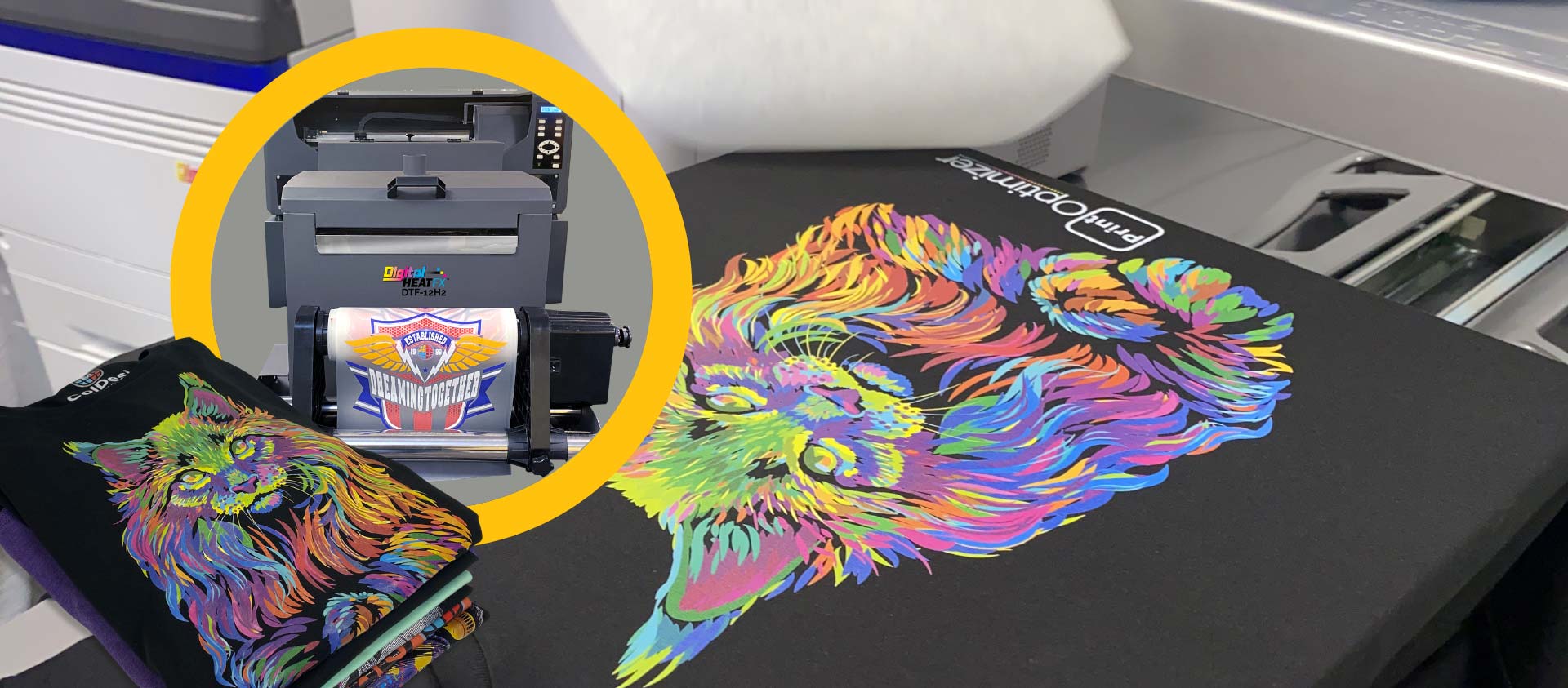The Ultimate DTF Printing Overview: Strategies, Products, and Applications
The Ultimate DTF Printing Overview: Strategies, Products, and Applications
Blog Article
Grasping DTF Printing: Idea for Getting Vibrant and Long Lasting Prints
In the globe of fabric printing, achieving sturdy and vibrant prints is a desired ability that can boost the top quality of your output. From selecting the best products to adjust print setups and developing post-printing ending up techniques, there are numerous elements that can influence the outcome of your prints.

DTF Printing Essentials
For those brand-new to the globe of fabric printing, comprehending the basics of DTF printing is important to mastering this cutting-edge strategy. Straight to Movie (DTF) printing is a modern-day approach that entails moving layouts from a special film onto various fabrics making use of a warmth press. Unlike typical approaches like screen printing, DTF offers advantages such as vibrant colors, intricate detailing, and the ability to print on varied products like cotton, polyester, and blends.
The procedure starts by publishing the style on an unique DTF movie using a suitable printer with CMYK or CMYKW ink sets. Once the layout is printed, it is then treated with a warm press to create a sturdy and resilient print. DTF printing is recognized for its capability to recreate complex layouts with high precision and shade accuracy, making it a preferred selection for services looking to produce custom-made garments, marketing items, and extra.
Choosing the Right Products

The sticky powder acts as a bonding agent between the printed design and the textile, so it has to have solid bond residential properties to make certain a resilient and long lasting transfer. By carefully picking the best materials for DTF printing, printers can boost the quality, vibrancy, and longevity of their prints.
Enhancing Print Setups
When intending to achieve the finest outcomes in DTF printing, precise focus to optimizing print settings is vital for ensuring top quality and exact transfers onto fabrics. One vital aspect to consider when enhancing print setups is the resolution.
While raising the rate can boost performance, it might endanger the final print's clearness and color saturation. Experimenting with various rates and observing the outcomes can assist figure out the ideal setting for each print job.
Furthermore, fine-tuning shade accounts and making certain appropriate color management are important for achieving constant and accurate colors throughout various prints. By adjusting color settings and profiles, printers can decrease shade variances and create uniform outcomes, improving the overall print quality and consumer complete satisfaction.
Preparing Artwork for DTF Printing
To ensure optimum cause DTF printing, meticulous attention to detail is important when preparing artwork for transfer onto fabrics. Begin by choosing high-resolution images to keep clarity and intensity in the final print. Vector graphics are liked as they can be quickly scaled without shedding high quality. Transform the Visit Your URL artwork to CMYK shade mode to make certain that the colors convert precisely from screen to print. Change the shade levels and comparison as needed to boost the vibrancy of the style. When including text to the art work, choose font styles that are clear and suitable for the intended dimension. Keep in mind to mirror the final layout prior to publishing to make sure that it moves correctly onto the garment. In addition, consider the material kind and color when choosing the art work, as these factors can impact the last look. By following these steps and paying close focus to the details, you can prepare artwork that is enhanced for vibrant and resilient DTF prints.
Post-Printing Finishing Methods
Applying efficient post-printing completing techniques is important to enhancing the resilience and aesthetic allure of DTF prints on textiles. Once the printing process is full, using warm to the printed design is crucial.
Once the movie is removed, the print might require extra curing time to additionally set the ink right into the fabric. This action aids improve the washability and durability of the print, guaranteeing it can withstand visit site several clean cycles without fading or breaking.
Furthermore, trimming any excess movie around the layout can provide the last print a clean and specialist appearance. Taking the time to appropriately end up DTF prints post-printing can substantially influence the overall high quality and long life of the fabric design.

Verdict
To conclude, grasping DTF printing calls for a thorough understanding of the fundamentals, choosing ideal materials, optimizing print settings, preparing artwork properly, and making use of post-printing finishing techniques. By complying with these ideas and methods, one can achieve dynamic and long lasting prints that fulfill their desired quality standards. Consistent practice and attention to detail are important in accomplishing successful results in DTF printing.
From choosing the ideal materials to adjust print settings and improving post-printing completing methods, there are many aspects that can influence the result of your prints. Unlike standard techniques like display printing, DTF uses benefits such as vivid shades, complex outlining, and the capability to print on diverse products like cotton, polyester, and blends.
As soon as the style is published, it is then cured with a warmth press to additional reading produce a long lasting and resilient print.When aiming to achieve the best outcomes in DTF printing, thorough focus to enhancing print settings is essential for ensuring high-grade and exact transfers onto textiles.In verdict, understanding DTF printing requires a comprehensive understanding of the basics, picking suitable materials, maximizing print settings, preparing art work efficiently, and utilizing post-printing completing techniques.
Report this page